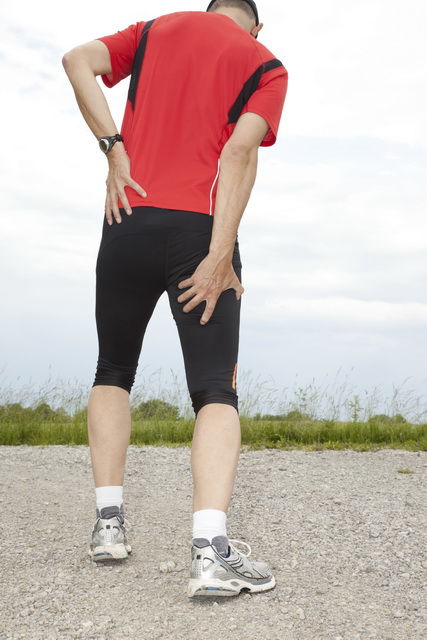Sciatica
What is Sciatica?
 Sciatica is pain in the lower extremity resulting from irritation and pressure of the sciatic nerve. The sciatic nerve is the largest nerve in the body and begins from nerve roots in the lumbar spinal cord in the lower back and extends through the buttock area to send nerve endings down the lower limb.
Sciatica is pain in the lower extremity resulting from irritation and pressure of the sciatic nerve. The sciatic nerve is the largest nerve in the body and begins from nerve roots in the lumbar spinal cord in the lower back and extends through the buttock area to send nerve endings down the lower limb.
What does Sciatic Pain Feel Like?
- Pain, burning sensation, numbness, tingling and possible weakness in the leg
- Commonly radiates from the lower back and upper buttock down the back of the thigh to the back of the leg
- Pain may be dull and aching or a ‘shooting’ pain down the leg all the way to the toes
- In severe cases, it can damage nerves and reflexes or cause the calf muscle to deteriorate.
What are the causes of Sciatica?
Pressure on the sciatic nerve can result from a number of causes including:
- Tightness of the piriformis muscle (a deep muscle of the buttock) that compresses the sciatic nerve
- Spinal misalignments, vertebral dysfunction
- Herniated disc, disc prolapse
- Osteoarthritis – osteophyte formation, spinal stenosis
- Poor posture – wearing high heels, prolonged sitting, poor mattress
- Poor lifting technique and poor bending habits
- Spinal compressions due to osteoporosis
How can Osteopathy Help?
Since there are many disorders that can cause Sciatica, your Osteopaths’ first task is to determine the exact cause of your sciatic nerve interference. Therefore, your Osteopath will initially begin by taking a thorough case history, followed by relevant spinal, orthopaedic and neurological examination.
Special diagnostic imaging investigations such as X-ray, CT or MRI may also be required to accurately diagnose the cause of your Sciatica. Your Osteopath will arrange this as required.
As Sciatica is due to pressure on the sciatic nerve, treatment involves removing this pressure, in order to reduce symptoms and help resolve the problem. Osteopathic treatment aims to decrease nerve pressure and associated inflammation by focusing treatment on poorly moving spinal joints, body compensatory patterns and easing muscular tension in the lower spine, buttock, hip and leg.
Techniques and management strategies are dependent on each individual case and may include:
- Soft tissue massage therapy and/or trigger point therapy
- Stretching of tight muscles, joints, tendons and ligaments
- Spinal mobilisation and/or manipulation and/or articulation
- Stretching and/or strengthening exercises
- Postural and ergonomic advice on how to minimise pressure and irritation of the sciatic nerve